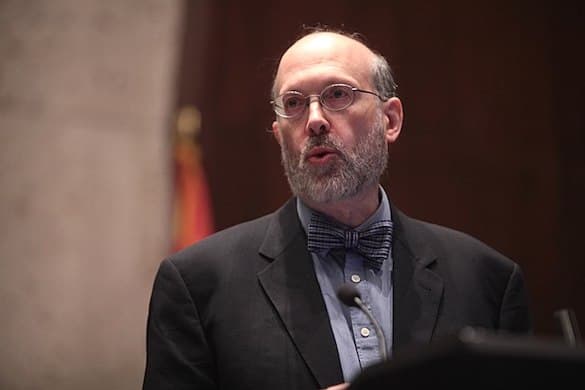‘A Tombstone on Chevron’
An unconstitutional seizure of judicial power is foiled at last by those who seek a more perfect union.

When historians sit down to write the history of the campaign to end rule by administrative agencies one name will loom large — that of a professor of law at Columbia University, Philip Hamburger. He is the visionary who came to see more clearly than others the unconstitutionality of agencies creating ersatz in-house courts. In hindsight it looks like an obvious error, but it took Mr. Hamburger to levy the reform. Congratulations are in order.
The Supreme Court’s decision overruling Chevron v. Natural Resources Defense Council is an inflection point. It ends 40 years of courts deferring to the “reasonable” interpretations of federal agencies in the presence of “ambiguous” statutes. The six justice majority writes that courts will now be required to “exercise their independent judgment in deciding whether an agency has acted within its statutory authority.”
Chevron itself, decided in 1986 by only six justices because of a spate of recusals, had grown into a behemoth. It is the most cited administrative law decision of all time. Today, though, Justice Neil Gorsuch writes in a concurrence — he is a master of the genre — that “the Court places a tombstone on Chevron no one can miss. In doing so, the Court returns judges to interpretive rules that have guided federal courts since the Nation’s founding.”
The cases that ended Chevron — Loper Bright Enterprises v. Raimondo and Relentless v. Department of Commerce— both concerned the fishing of herring in the Atlantic Ocean. A 1976 law required that boats be monitored. A regulation in 2020 mandated that the seamen pay $700 a day for that supervision. Two circuit courts leaned on Chevron in finding for the government. Chief Justice Roberts, though, calls Chevron’s authority a “fiction.”
Chevron, the Chief Justice writes, is “fundamentally misguided” and “unworkable.” He reflects that “one judge might see ambiguity everywhere; another might never encounter it.” Justice Clarence Thomas, in his own concurrence, tallies Chevron’s “constitutional defects.” He observes how the 1984 ruling “curbs the judicial power afforded to courts, and simultaneously expands agencies’ executive power beyond constitutional limits.”
It fell to a formidable justice, Elena Kagan, to write Chevron’s elegy. She declares that it “has become part of the warp and woof of modern government, supporting regulatory efforts of all kinds.” She quips that “if opinions had titles, a good candidate for today’s would be Hubris Squared.” Her dissent ends with a lament, the kvetch that her “own dissents to this Court’s reversals of settled law by now fill a small volume.”
That brings us back to Mr. Hamburger. In 2021 these pages noted that, due to his efforts and those of the civil rights organization he founded, the New Civil Liberties Alliance, the “long march back to the Constitution has begun.” We were heartened by “the advances in the long slog away from” Chevron. As this case was in the balance, hoped that “this court could still secure the honor of being dubbed what these columns have called the Hamburger Court.”
It was the NCLA, founded by Mr. Hamburger, that litigated Relentless. NCLA can savor the unjiggering of what Chief Justice Roberts calls a “judicial invention.” The group reports that it plans to form an arm — a “Relentless Working Group” — to ensure that the high court’s word is followed by agencies that can be recalcitrant. Such follow-through reflects the commitment Mr. Hamburger and his colleagues have to the Constitution.
It reminds us of, say, another constitutional visionary, Edward Jay Blum, who saw the injustice of bias in university and levied, among others, the case known as Students for Fair Admission v. Harvard. That landmark, which ruled as unconstitutional the use of race in higher education admissions, was, like this ruling, primarily the work of one man — Edward Blum. Organizations he created are also following through on the victory he won at the high bench.
This is a moment to savor the very Preamble of our Constitution. It includes the first enumerated purpose of the parchment — “to form a more perfect Union.” Our coverage of struggles like the ones mounted by Messrs. Hamburger and Blum inspire our admiration and put a spring in our step — and pen, too. They are for more perfection in our country’s laws. It’s just great to see, we don’t mind saying, when it comes out right.

